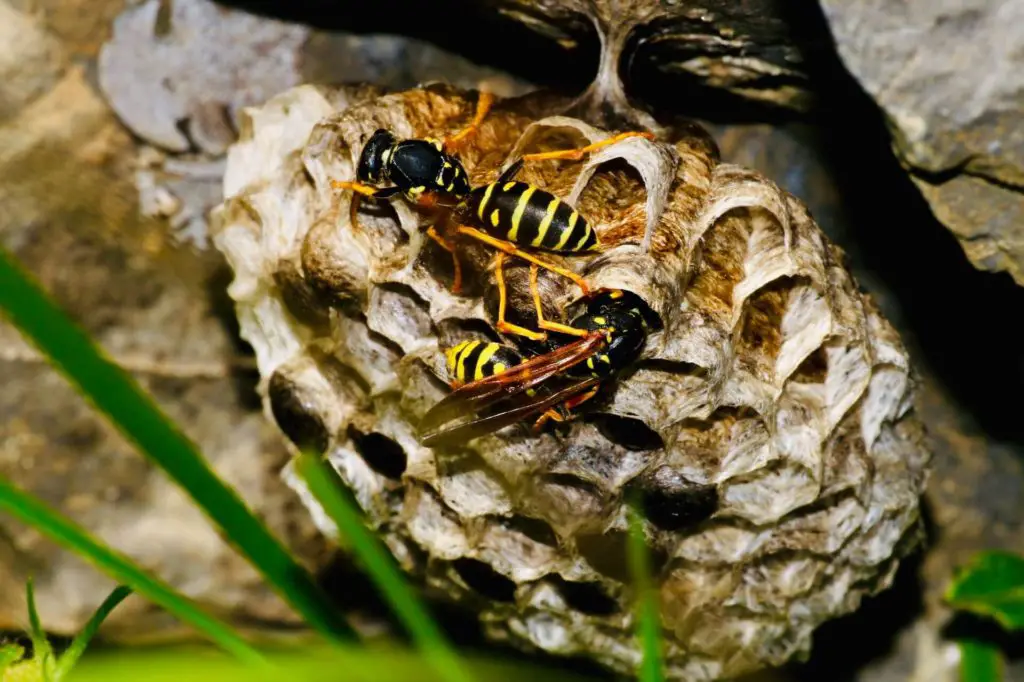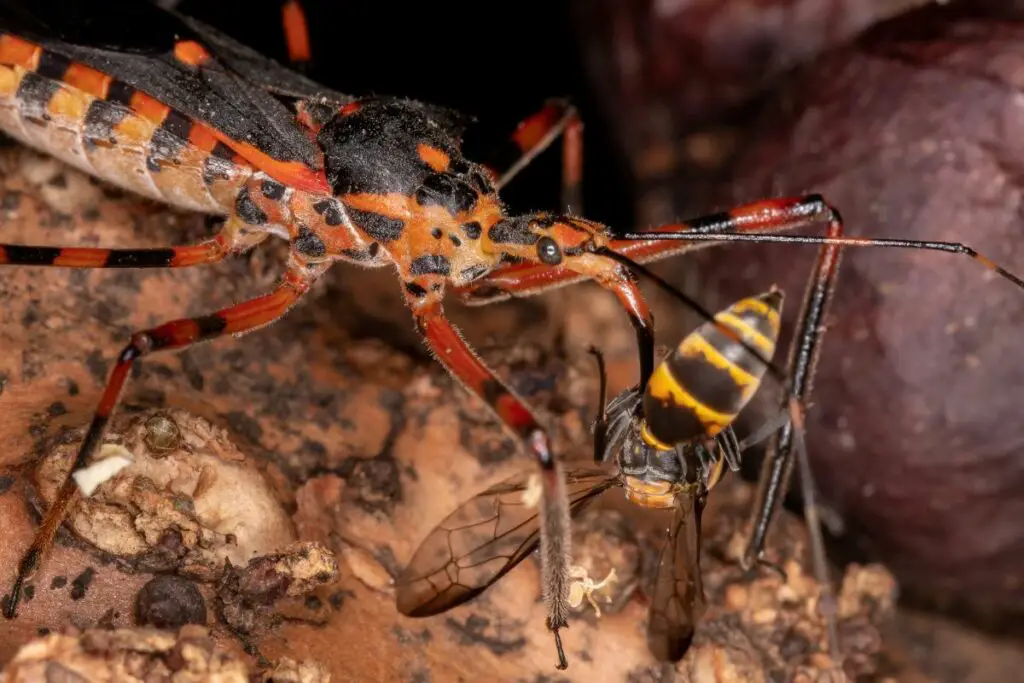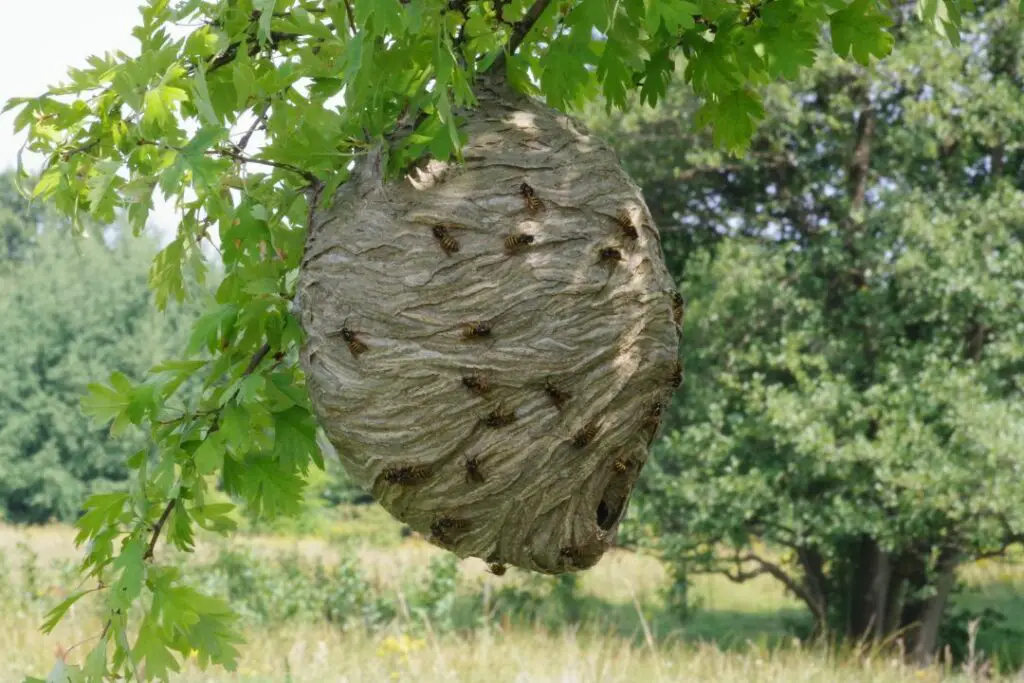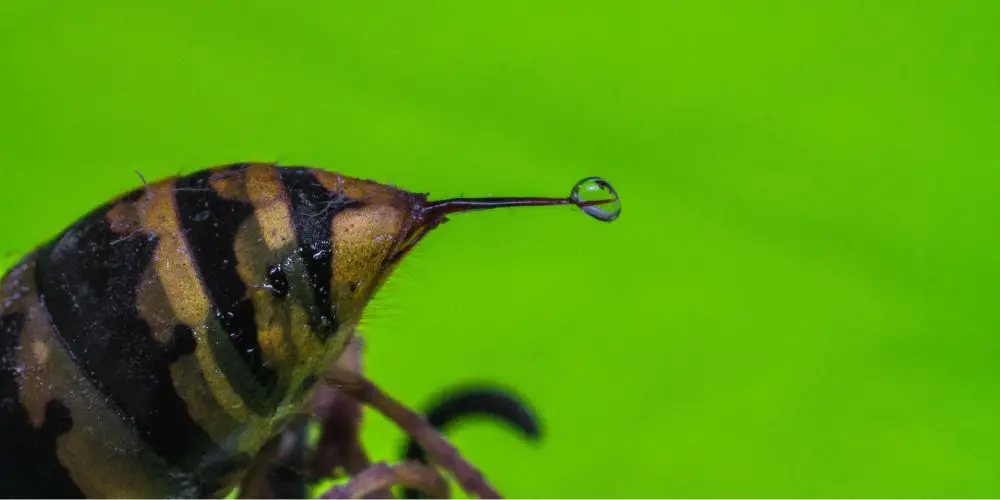Last updated on January 5th, 2024 at 12:38 pm
Most wasps will die out by late October if their nests are in the wild. Nests in your home can be active throughout December due to the extra warmth and protection.
It’s early June here in the UK, and wasps are already visiting picnics and pub lunches. While individual wasps are no more than just a nuisance, an entire nest is a different story, especially on your property.
Wasps’ nests can house up to 10,000 wasps in extreme cases. These numbers of wasps are rare, but it’s not unusual for nests to harbour between 3000-6000 during the height of summer.
Now we know the short answer: let’s get the full story on when wasps appear, how they build their nests and when you can expect them to leave.
When Do Wasps Go Away?
Much like bees, wasps live on a diet of primarily nectar, but unlike bees, they’ll happily consume insects in their larval form. This means that as Summer ends and moves into Autumn, the amount of viable forage for wasps decreases.
Wasps generally have a seasonal life cycle that aligns with the warmer months. Here’s a quick breakdown:
- Spring: Queen wasps emerge from hibernation and start building nests.
- Summer: Worker wasps are busy maintaining the nest and foraging.
- Late Summer to Early Autumn: The colony reaches its peak size.
- Late Autumn to Winter: Most wasps die off in the UK, except for new hibernating queens.
Viable food sources for wasps include:
- Nectar
- Small Insects
- Fruit
- Honey
- Artificial sugars produced by humans
Well aware of the lack of suitable resources, a wasp colony will produce new queens and males to mate and ensure the continuation of the colony next year.
After mating, the queens will find a suitable spot to hibernate while the males die off after completing their primary role. Find out what happens if you kill a queen wasp in our short read.
When Do Wasps Come Out Again In Spring?
As winter ends, hibernating queens emerge and seek a suitable location for a new nest. You will generally see young wasp queens emerge around April, but irregularly warm seasons can affect this.
Very warm winters can encourage queens to leave hibernation early; there is very little food for emerging queens early in spring, and some queens can starve to death if they emerge too quickly.
After the queen has set about creating the foundations of a nest, she will raise the first brood set with worker wasps hatching in late April to early June.
At this point, the queen focuses solely on reproduction, letting the colony take charge of building and expanding the nest.
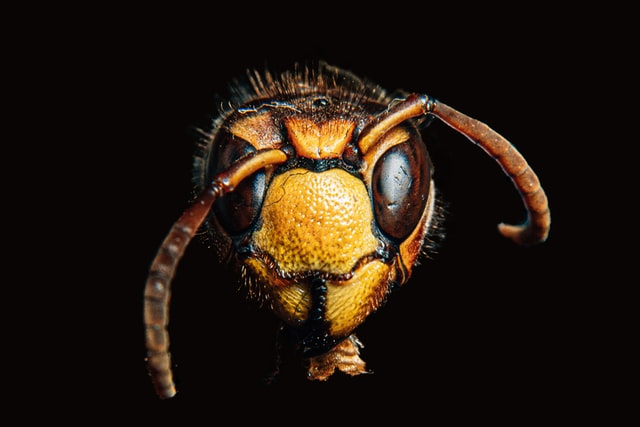
Where Do Wasps Make Their Nests?
Unlike other insects emerging from hibernation, wasps will never use the same nest two years in a row.
If an area ticks all the boxes for a suitable nest, you’ll likely see old nests in and around the new nest, indicating several years of use.
When assessing whether a location is suitable for a nest, a queen will need to consider the following:
- Is it easy to access
- Does it have suitable forage and resources in the local area
- Is it protected from severe weather
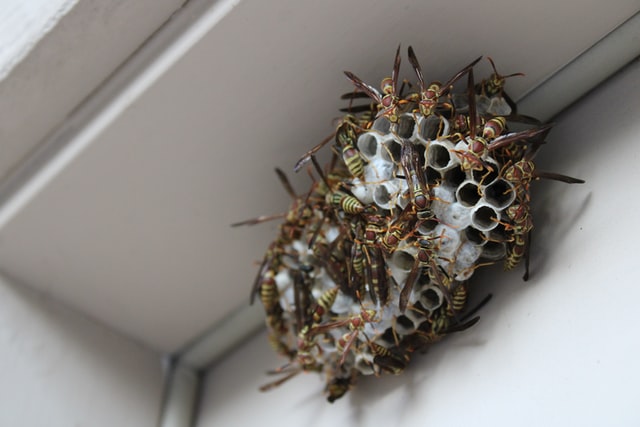
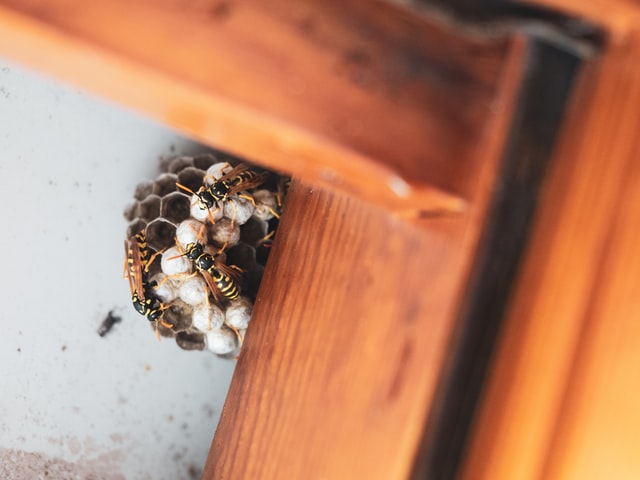
Locations, you’re likely to find a wasp nest
Wasps can make their nests in some of the strangest places. Some of the possible locations where you might find a wasp nest include:
- Loft spaces
- Sheds
- Window frames
- Door frames
- Garages
- Fascias and guttering
- Vehicles
- Outbuildings
- Wall cavities
- Wardrobes and closed spaces
Most wasps’ nests will be on the exterior of your property, but they can occasionally take up residence inside your home and are particularly prevalent in roof spaces.
What Should You Do If You Find A Wasp Nest?
The sight of a wasp nest on or inside your property is very alarming. Wasps can be aggressive when threatened, leading to nasty stings if no action is taken to remedy the situation.
While some pests in the home can be removed using DIY methods, when it comes to wasps, I strongly recommend a professional wasp removal service.
If you do choose to remove the nest yourself, ensure you follow our simple tips below to stay safe:
- Check for allergies to wasp stings. Anyone allergic to wasps should avoid approaching the nest at all costs.
- Always remove your nest during the night. Wasps are far less active when the sun disappears, and they’ll react sluggishly.
- Wear protective clothing that covers your whole body, and don’t leave any gaps for wasps to enter.
- Keep any pets or children well clear of the nest during the removal. Wasps will attack anything close by when they feel threatened.
Avoid any of the following when removing a wasp nest yourself:
- Removing from wall cavities or hard-to-access roof areas, don’t risk a severe injury through falling. Always contact a professional removal service for nests in hard-to-reach locations.
- Never try to use fire to destroy a nest; the material wasps used to create their nest is highly flammable, which could lead to a fire risk.
- Avoid using light to illuminate the nest. This will agitate the inhabitants and warn them of your approach.
The Inner Working Of A Wasp Nest
Check out the short video below from Science Insider to see what a wasp nest looks like on the inside and how the nest is structured.
Are Wasps Nests Dangerous?
While the nest structure poses minimal risk to you or your family, its inhabitants do. So, what makes wasps dangerous to humans?
- Allergic reactions to wasps are common and can lead to a severe reaction in the form of anaphylactic shock. This requires immediate medical treatment and, if left untreated, can lead to death. While this only applies to approximately 0.5 of the population, it is something to be aware of.
- When a wasp stings, it releases an alarm pheromone, indicating to other colony members that they are under attack. This can lead to a fast and vicious retaliation, even for people who aren’t allergic and experience severe medical complaints when experiencing multiple stings.
- Getting stung in the neck or face can cause breathing difficulties, particularly in children and older adults.
How To Identify Which Species Reside In The Nest
There are many species of wasps, and how they build their nests can help you identify which species you’re dealing with.
- Paper wasps construct nests with open hexagonal combs with a large to hang from.
- If wasps are present in large numbers and seem to enter and exit via the same hole, you are likely dealing with a yellowjacket nest.
- Hornets’ nests have a slight point at the bottom and a single, large opening. The outside is made of a thin paper-like substance. Hornets are considerably bigger than wasps but less aggressive than wasp colonies if unprovoked.
How long do wasp nests last?
Wasps will only use a nest for one summer, but if the location provides suitable resources and shelter, they will likely construct next year’s nest in the same area.
You can avoid this by blocking any potential entry and removing access to resources by securing bins.
Head to our guide on when wasps leave the nest to learn more.
Will wasps go away by themselves?
As autumn and winter eventually arrive, most of the colony will die, leaving the queen to hibernate over winter.
During this period, it is doubtful you will see any wasps.
Do wasp nests die in winter?
Yes, wasps’ nests will be utterly uninhabited over the winter months.
What temperature do wasps stop flying?
Wasps will stop taking flight for resources at temperatures below 50-53°F.

